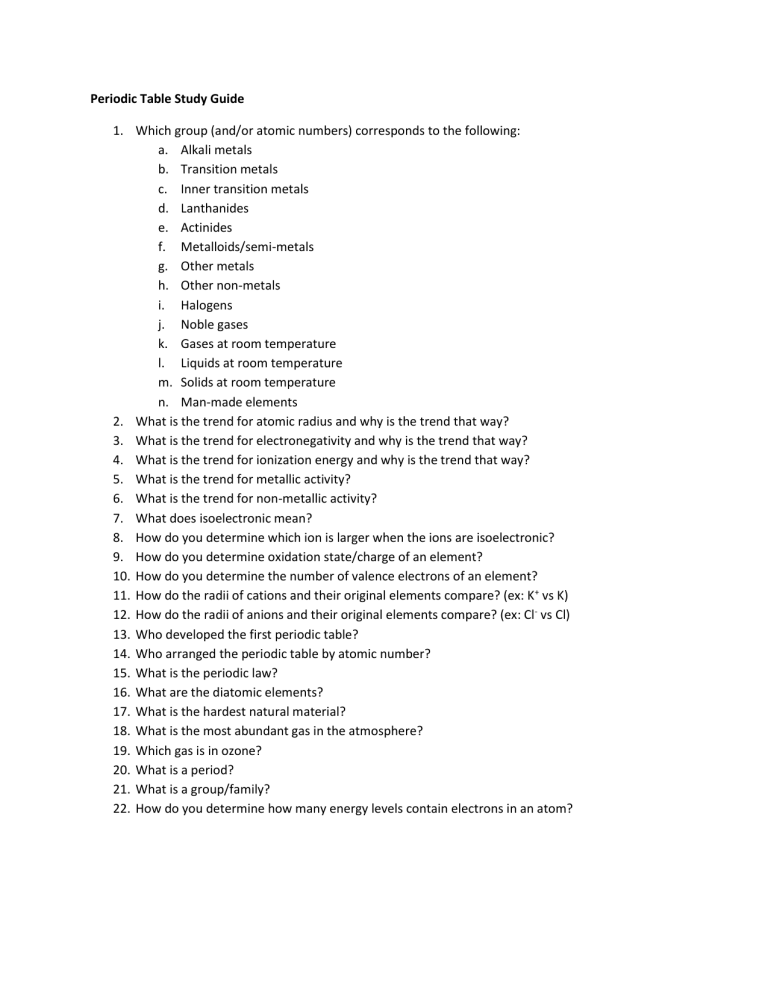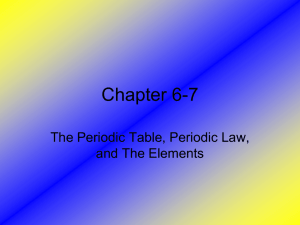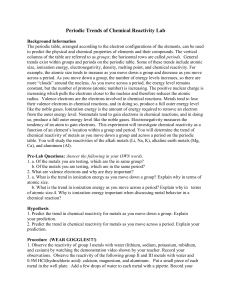Periodic Table Study Guide

Periodic Table Study Guide
1.
Which group (and/or atomic numbers) corresponds to the following: a.
Alkali metals b.
Transition metals c.
Inner transition metals d.
Lanthanides e.
Actinides f.
Metalloids/semi-metals g.
Other metals h.
Other non-metals i.
Halogens j.
Noble gases k.
Gases at room temperature l.
Liquids at room temperature m.
Solids at room temperature n.
Man-made elements
2.
What is the trend for atomic radius and why is the trend that way?
3.
What is the trend for electronegativity and why is the trend that way?
4.
What is the trend for ionization energy and why is the trend that way?
5.
What is the trend for metallic activity?
6.
What is the trend for non-metallic activity?
7.
What does isoelectronic mean?
8.
How do you determine which ion is larger when the ions are isoelectronic?
9.
How do you determine oxidation state/charge of an element?
10.
How do you determine the number of valence electrons of an element?
11.
How do the radii of cations and their original elements compare? (ex: K + vs K)
12.
How do the radii of anions and their original elements compare? (ex: Cl vs Cl)
13.
Who developed the first periodic table?
14.
Who arranged the periodic table by atomic number?
15.
What is the periodic law?
16.
What are the diatomic elements?
17.
What is the hardest natural material?
18.
What is the most abundant gas in the atmosphere?
19.
Which gas is in ozone?
20.
What is a period?
21.
What is a group/family?
22.
How do you determine how many energy levels contain electrons in an atom?




